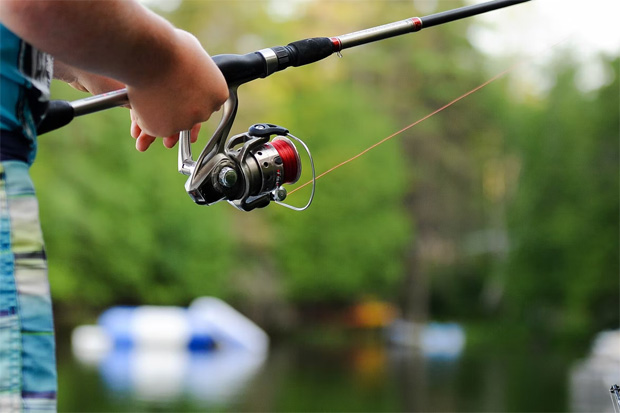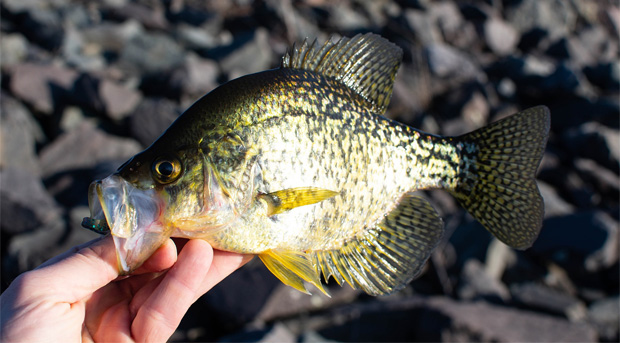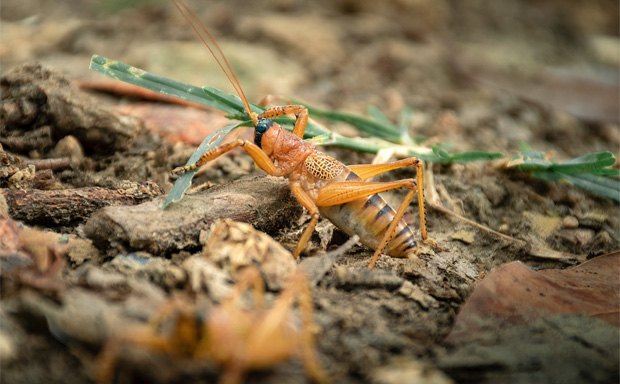How To Fish With Crickets – Best Tips And Tricks You Must Know

How To Fish With Crickets – Best Tips And Tricks You Must Know
If you are a fan of fishing, then you probably know about the most popular types of baits being used. A professional angler is capable of utilizing virtually everything to reel the catch in. These include leeches, insects, minnows, worms, and even artificial fishing lures! Jigs, buzz bait, crankbait, spinnerbait, and trolling lures are merely a few common choices.
But do you know that there is a particular fishing style that uses crickets as bait? Not only do such jumpy animals have their unique, irresistible movement to hungry fish, but they are also rich in protein and extremely delicious. Therefore, learning how to fish with crickets means you stand a higher chance of coming home with a full bucket. For those of you who wish to master this technique, keep reading to find out more!

What Kind Of Fish Can You Catch With Crickets?
Before diving any further into this guideline, here is a warning. While crickets make excellent bait, they are not designed for multipurpose fishing trips.
There are only a handful of species finding themselves drawn to these bugs. Thus, do not regard crickets as a fool-proof way to attract the fish.
That being said, crickets are still a must-try bait for the following types of fish.
- Trout
Most trout have an elongated, skinny body covered in various shades, ranging from blue-green, brown to olive and black. Its underbelly is silvery, and there are several black spots scattering on a trout’s fins, sides, and back. The colorful appearance makes trout highly visible to the eyes.
Plus, they tend not to fight aggressively when getting caught. Thus, trout remains a safe option for those who wish to exercise their angling skills.
The three most well-known types of trout, namely cutthroat trout, brown trout, and rainbow trout, all find crickets alluring. Feel free to use these live bait if you want to lay your hands on medium and large-sized trout.
The tip here is not to force the casting. Instead of trying to throw the bait in the opposite direction, let nature do its job. All you have to do is simply throw a cricket underwater. Afterward, the water and wind movements will gently guide the cricket to where it should be.
Many people make the rookie mistake of trying to place the cricket in a pre-determined spot. Little do they know that such a sudden and brash act will cause lots of commotion and sound. As a result, trout can easily smell something fishy and will swim away.
For those looking to venture beyond local waters, Fort Myers Beach fishing charters offer an unparalleled opportunity to test angling skills against a variety of sea fish. Engaging with seasoned experts in these charters can significantly enhance your fishing experience, making it memorable and fruitful.
Further reading: Essential Tips On Setting Up For Trout Fishing
- Crappie
Crappie has a slightly shorter body than that of trout. Most of the fish come with greenish or silvery-gray skin, where black spots are located from the mouth to tail.
If you are a beginner and have little experience regarding this hobby, the professionals will definitely recommend crappie fishing to you thanks to its ease.
Crappie is best to catch during the spring and summer. In these months, crappie forms a school at the middle level of water, unknowingly turning themselves into easy targets.
To reach the crappie, you have to employ a hook size 4 to 1. Consider adding a split shot to your rig so that the cricket can quickly travel deep underwater. When the crappie detects a nearby cricket, chances are they would jump in and try to swallow the bait right away.
- Yellow perch
As the name already indicates, most yellow perch have a yellowish-greenish body. Some are golden, while others have golden-silvery skin. Their fins are colored in red and orange, so they can be easy to detect under clear water.
If it helps, check for the dark-colored, vertical bands running on both sides of a yellow perch. When the fish congregate, catching them will be a piece of cake, especially when using live crickets as bait.
Now, there are two types of yellow perch: the small and the bigger ones. The former is most likely to feed on the surface, but the latter can only be found in deeper water levels. In case you want to test your skills, letting the crickets flow quietly will suffice. But if you want to bring home a large-sized yellow perch, you need to be a bit more prepared.
The first step is to rig your fishing line with a split shot. The weight from the shot will sink your bait as deep as possible, creating a perfect opportunity for your intended catch to get reeled in.
For better bait suspension, you can always use a bobber. This way, the cricket will be hung at a convenient angle for the fish to dive at.
- Bream
Bream has a flat body with a tiny head. Its skin is covered in brown-black or bluish-black, occasionally dotted with silvery blotches. While they are not the easiest fish to catch, bream is highly nutritious and is sought after by anglers for their delicious taste.
For bream-lovers, going fishing early in the morning is recommended. This is the time when schools of breams rise near the surface to feed on bugs and smaller fish. Similar to how you catch trout, cast the cricket as gently as you can.
Make sure to combine the bait with a small hook, or else you run the risk of damaging a fish’s mouth permanently. Given how hungry and crowded the bream are, they will quickly swim to where your bait is located and take a bite.
Hooking a cricket is arguably the most difficult process. The attached animal must be alive and jumpy to draw the attention of your fish as naturally as possible. But their squirminess makes it a challenge to get them connected properly.

How Do You Hook A Cricket?
But worry not! Here is detailed instruction on how to connect your cricket firmly to the hook:
- Use the fingers on your left hand and hold the cricket. You can place the fingers on the cricket’s body or wings. Do not exert too much force, but do not loosen the grip either.
- Find the back of the cricket. You will see a small, soft area where the hook can penetrate not too deeply. Holding the hook using your right fingers. Slowly pierce the hook through the cricket’s back. Remember to be very careful here. If you are reckless, the hook may end up poking inside the cricket’s body, leaving it dead.
- Double-check the newly hooked bait one last time. Look closely to see if the cricket is still alive. Examine its back and make sure no body part is hurt besides the hooked one.
- Start casting immediately. Even with the best hooking techniques, most crickets do not last longer than 5-7 minutes. If you hesitate, your cricket may die before you actually do anything useful.

What Is The Best Way To Catch Crickets?
Unlike other types of fishing bait, live crickets are not available for purchase at fishing equipment stores. For those who intend on learning how to fish with crickets, catching them is a prerequisite. Here’s how to do it:
- Find an empty water bottle that can store at least 2 liters of water. Remove the bottleneck completely so that you have two separate pieces. Wash both of them carefully.
- Prepare a batch of plain bread crumbs and place them inside the bottle. Do not add anything too spicy or flavorful. If the crickets think something is off, they are not likely to enter the trap. That being said, these insects are drawn to sugar. To increase the efficiency of your bait, feel free to put in a few tiny sugar cubes.
- Invert the cut bottleneck and place it firmly at the top of your bottle. This creates a one-way channel where the crickets can only go in.
- Ask around to see which areas are best known for having lots of crickets. Once you arrive there, find a shady spot. Place the bottle on its side so that the opening seems inviting to the crickets. You can even sprinkle a bit of bread and sugar near the funnel to lure the crickets in effortlessly.
- When the crickets rush inside the bottle for food, they will soon find themselves unable to escape. The more crickets get in, the harder it is for them to locate the right hole to crawl back.
- Leave the bottle alone for at least a few hours. If you want to maximize your catch, leave it overnight. Return in the next morning and collect the crickets for later use. Do not forget to transfer these insects from your bottle to another container.
How Long Do Bait Crickets Live?
The longevity of bait crickets depends heavily on how you take care of their living environment.
If you let them stay inside the bottle, they are likely to survive for 5-7 days. If the food is inadequate, they can end up dying within the first few days.
On the other hand, if you can find a tank or some sort of container, the crickets can live up to a month. You should provide them with food, water, a few pieces of grass, and lots of space to move around.
In some cases, you only need to keep a few crickets alive. The job is much easier now. You can soak a sponge in water and place them inside a bottle. Place some bread crumbs next to it and let your insects inside.

Can You Freeze Crickets For Fishing?
Yes. When the temperature drops too low, crickets enter a state of dormancy. Anglers take advantage of this habit to ensure their live bait remains usable for an extended period of time.
You can start by placing the insects inside a freezer bag and switching the temperatures down to 0 degrees Fahrenheit. These insects can stay alive for roughly 1-2 months using a home freezer and up to 3 months using a commercial freezer.
Now, here comes the tricky part. You have successfully frozen your crickets for future use. What can you do to revive them? Easy enough! Let’s take a look at the guidelines for the steps below:
- Pull the freezer bag from your freezer and open it immediately. Remove the crickets one by one.
- Find a container with lots of room for the crickets to spread their wings and legs. Each cricket needs to be a few centimeters away from the other. This way, they all have enough space to breathe and move around once they have come back to life.
- Turn on the heat lamp and set it at room temperature. Over the course of a few minutes, turn it up a bit. Slowly raise the temperature until you feel sufficient.
- Let the heat warm up these crickets for roughly 4 hours. If you want things to quicken, place a heating pad at the bottom of the container and put a piece of cloth on it. The fabric will absorb part of the heat and prevent your crickets from dying of getting overheated.
- Once the crickets wake up, feed them with water, bits of bread crumbs, and sugar. After months of not eating, these insects might ravish the food and choke on them. Hence, you need to regulate the amount of food provided.
Where To Buy Crickets For Fishing?
Some convenient stores sell live and frozen crickets for fishing. You can get a batch of 50 crickets at $7. Still, catching them on your own is more fun and economical.
Conclusion
Once you finish this article, surely you will know the ins and outs of how to fish with crickets. Next time you go on a fishing trip, make sure to bring along these jumpy baits and see how useful they are!
Collaboration – Guest Article.




